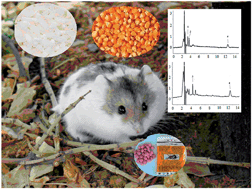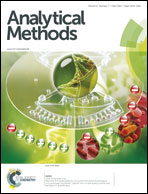Analysis of four anticoagulants rodenticides in foodstuff and body fluids by high-performance liquid chromatography with photodiode-array detector
Abstract
A sensitive high-performance liquid chromatography (HPLC) method was developed for the determination of four anticoagulant rodenticide residues (warfarin, coumatetralyl, crimidine, and bromadiolone) in foodstuffs and body fluids. The conditions of accelerated solvent extraction (ASE) and HPLC were optimized. Good linearity was achieved with a correlation coefficient (r) of 0.9999. The limits of quantification for the four rodenticides ranged from 2.2 μg kg−1 (crimidine) to 13 μg kg−1 (bromadiolone) for solid samples and from 0.02 μg mL−1 (crimidine) to 0.15 μg mL−1 (bromadiolone) for liquid samples. The intra- and inter-day relative standard deviations (RSDs) of the four analytes at two spiked levels were in the range of 0.3–1.1% and 0.5–1.6%, respectively. The mean recoveries for warfarin, coumatetralyl, crimidine, and bromadiolone at the two spiked levels were in the range of 94–106% with RSDs of 0.3–1.1% for the rice and corn samples, and 87–108% with RSDs of 0.3–0.8% for the whole blood and urine samples. The proposed method has characteristics of high precision, sensitivity and accuracy as well as low consumption of the reagents. The proposed HPLC method was successfully applied for the analysis of the four anticoagulant rodenticides in rice, corn, whole blood, and urine samples.


 Please wait while we load your content...
Please wait while we load your content...